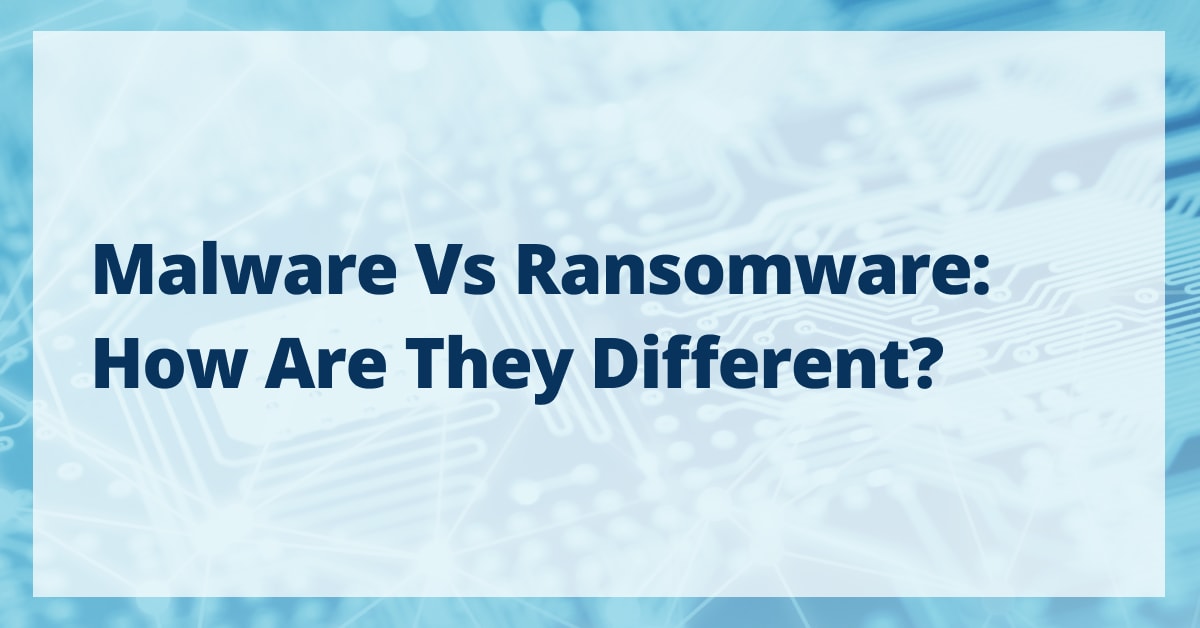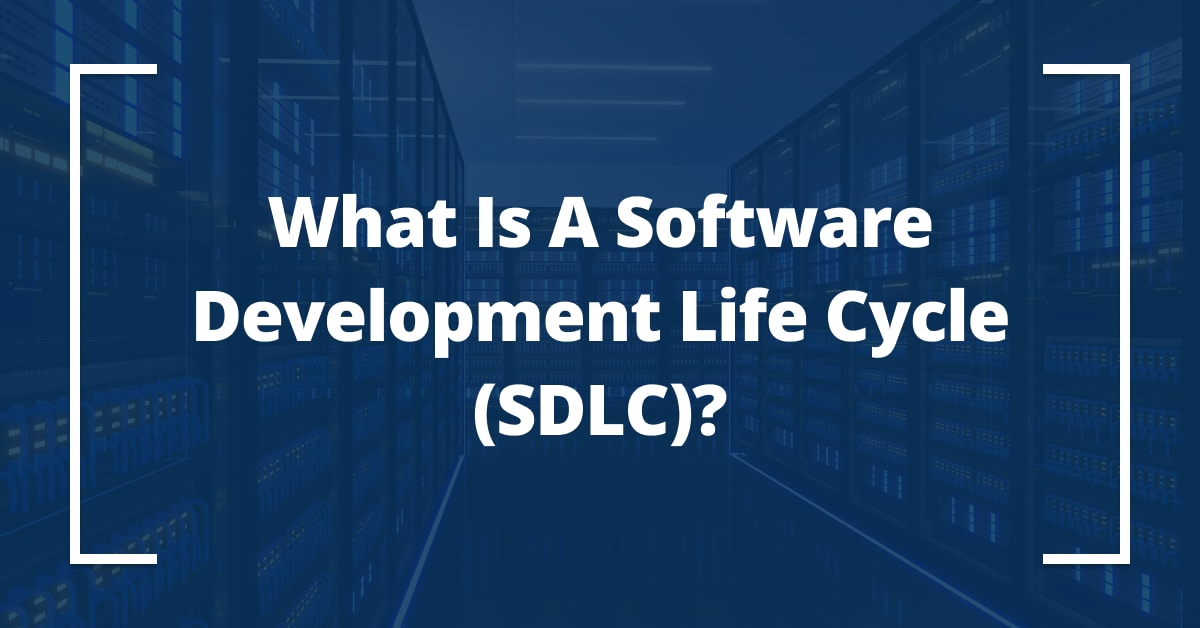
[ad_1]
In today’s digital age, our lives are intertwined with the Internet and technology in unprecedented ways. We rely on digital platforms for work, communication, shopping, entertainment, and so much more. However, as our digital footprint expands, so does our vulnerability to various cyber threats. Among the many threats lurking in the shadows of the digital world, two terms frequently pop up: malware and ransomware.
Despite their common usage, a lot of people aren’t sure what these terms mean and how they differ. Understanding these differences is not just a matter of semantics; it’s crucial for effectively safeguarding our digital resources and responding appropriately if an attack occurs.
This guide aims to demystify these terms, explore their different types, highlight the signs of infection, discuss preventive measures, and guide you on what to do if malware or ransomware compromises your system.
Keep reading to learn the differences between malware vs ransomware.
Definitions of Malware vs Ransomware
Malicious software (malware) is simply software that is specially created to intentionally cause damage. It encompasses a wide variety of harmful software types, including viruses, worms, Trojans, and spyware. This type of attack isn’t limited to just computers either. Cybercriminals can use malware to attack servers, computer networks, and clients.
On the other hand, bad actors use ransomware to encrypt the target computer and prevent its use until their victim pays a ransom demand. The key difference here is that while all ransomware is malware, not all malware is ransomware. Ransomware has a specific function — to extort money.
Types of Malware
There are various types of malware, each with unique characteristics and methods of causing havoc.
- Viruses: Much like a biological virus, a computer virus attaches itself to a clean file and infects other clean files. Once it spreads, the virus can delete or corrupt files and even damage the system’s core functions.
- Worms: Once this type of malware infiltrates, it can use network interfaces to infect the entire network of devices, both locally and over the internet. It then uses each infected machine to infect others.
- Trojans: Just as it sounds, this type of malware gains access by disguising itself. Appearing to be a normal file or program, trojans trick users into downloading and installing more malware on their devices.
- Spyware: This is a type of malware designed to spy on you. It hides in the background and gathers information on your activities, including recording your passwords and credit card numbers and observing your browsing habits.
Types of Ransomware
Ransomware also comes in different types, depending on their operation.
- Encryption-based Ransomware: This is the one most people have heard about, with CryptoLocker, Petya, and WannaCry being the most well-known. Once in the system, ransomware blocks access to the system by encrypting files and folders. And the only way to get the decryption key is to pay a ransom to the attacker.
- Lock Screen Ransomware: Instead of encrypting files, this type of ransomware locks the user interface and demands a ransom to unlock it.
- Destructive Ransomware: The most harmful type, it not only locks the system but also aims to destroy data. Unfortunately, victims have no guarantees of getting their data back even if they meet the demands.
Common Signs of Infection from Malware or Ransomware
Knowing the signs of malware or ransomware infection is crucial for early detection and mitigation. Here are some common symptoms:
- Slow performance: Your device may slow down significantly as the malicious software consumes system resources.
- Pop-up ads: An abundance of pop-up ads may suggest adware (a form of malware) is on your machine.
- Unexpected shutdowns or crashes: If your device regularly crashes or shuts down without warning, it may be infected.
How To Prevent Malware and Ransomware Attacks
Cyber threats like malware and ransomware are continually evolving, growing in sophistication and number. This evolution makes it necessary for individuals and businesses alike to adopt proactive measures to protect their digital resources. A strategic approach that includes a combination of technical solutions and user awareness can be the most effective defense against these threats.
Before we explore the preventive measures, the key thing you have to understand is that when it comes to cybersecurity, it’s a continuous process. It’s not just about installing an antivirus program or setting up a firewall. It’s about regularly updating these security measures, staying informed about the latest threats, and always being vigilant about your digital interactions.
- Antivirus programs: Install a reliable antivirus program and keep it updated to detect and neutralize threats.
- Regular updates on systems/software: Regularly update your operating system and software applications to patch any security holes.
- Backup regularly: Regularly back up your files (ideally in multiple locations, including an offline backup) to ensure that if a ransomware attack does occur, you can restore your system to its previous state.
- Educate yourself and your team: Make sure everyone who uses your network understands what to look out for (such as suspicious emails) to prevent accidental downloads of malware or ransomware.
After implementing these strategies, it’s crucial to routinely review and update your cybersecurity protocols. This is a threat that attackers are constantly changing, and your defenses must evolve with it. Regular audits of your system can identify previously unidentified potential vulnerabilities. Also, regular training for your team can ensure that they stay updated on the latest scams, phishing attempts, and best practices for cybersecurity. Remember, a chain is only as strong as its weakest link; everyone in the organization plays a crucial role in maintaining robust cybersecurity defenses.
What To Do if Infected by Malware or Ransomware
Despite our best efforts, sometimes, the unthinkable happens. When it comes to encountering malware or ransomware, every second counts. You must take quick and decisive action to minimize damage, prevent the spread of the infection, and begin the recovery process. The first step is to recognize that you’ve been compromised, which, thanks to the signs we discussed earlier, you should be able to do.
Before we delve into the specific steps, a key thing to remember is not to panic. While the situation is undoubtedly stressful, acting in haste can lead to mistakes that might exacerbate the problem. Instead, approach the situation methodically and calmly.
- Disconnect: First and foremost, disconnect your device from the Internet if at all possible. This will help prevent it from spreading to other systems and being able to communicate with its controller.
- Contact a professional service: Reach out to cybersecurity professionals immediately. They have the tools and expertise to analyze and eradicate malicious software while minimizing damage.
- Notify affected parties: If the infection may impact others (e.g., a cybercriminal was able to infect your system with ransomware and you have shared files), inform them as soon as possible so they can take protective measures.
- Report the incident: If the infection is severe, you should consider reporting the incident to law enforcement.
After taking these immediate steps, remember that the aftermath of an infection is just as critical as the initial response. Once you’ve dealt with the immediate threat, conduct a thorough audit of your system to understand how the breach occurred and identify any potential vulnerabilities. And, of course, you need to review your security protocols and educate everyone on the changes to help prevent these types of attacks in the future.
To sum up, dealing with a malware or ransomware infection involves swift action, reaching out to professionals, notifying others who may be affected, and learning from the incident to bolster your future defenses. Remember, the goal is not just to recover from the incident but to emerge stronger and more resilient against future threats.
Final Thoughts
In an age where our digital lives and assets are increasingly under threat, understanding the nuances of malware vs ransomware remains crucial. By recognizing the differences between the two, along with knowing their types, signs of infection, and prevention strategies, you better equip yourself to protect your digital landscape.
Remember, security is not a one-time event but an ongoing process. Regular system updates, continuous learning, using reliable antivirus software, and a well-thought-out backup strategy are key to robust cybersecurity. And should the worst happen, knowing what steps to take can mitigate damage and lead to a quicker recovery.
As always, Liquid Web is committed to helping our customers understand and navigate the digital landscape. If you have any questions or need assistance, our security experts are just a call or click away. Stay safe in the cyber world!
[ad_2]
Source link






